The Annual General Meeting of the Grand Prix Drivers Club took place in the Maranello Palace Hotel on the weekend of May 6-9 and was hosted by Ferrari SpA.
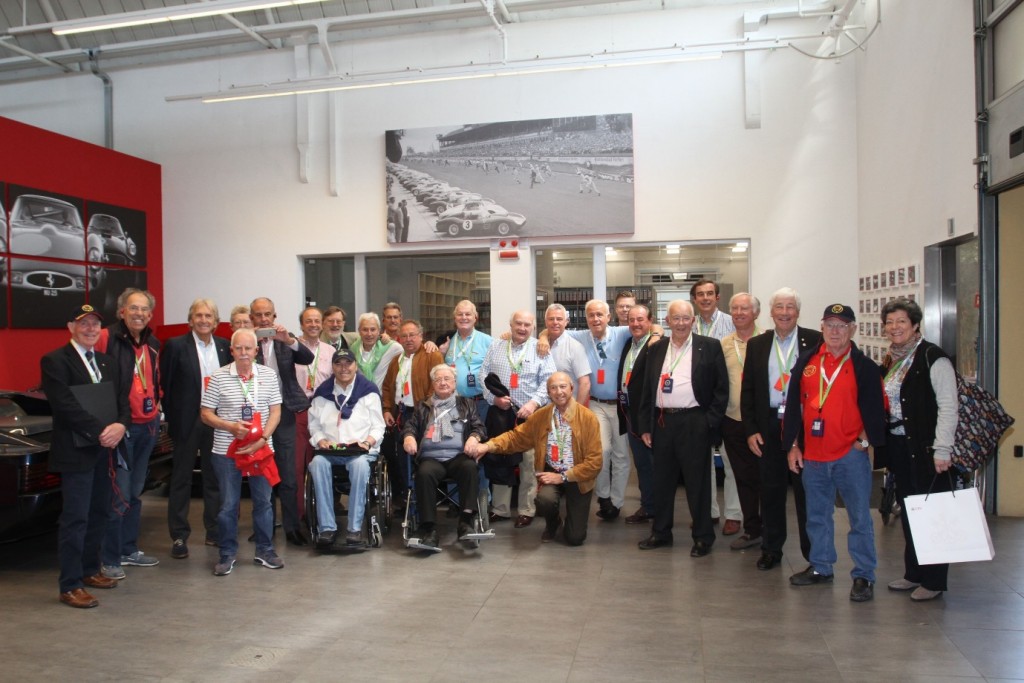
Many of the members attending had either driven for Scuderia Ferrari or had raced a Ferrari at one time or another and so there were many stories passed around over the weekend.
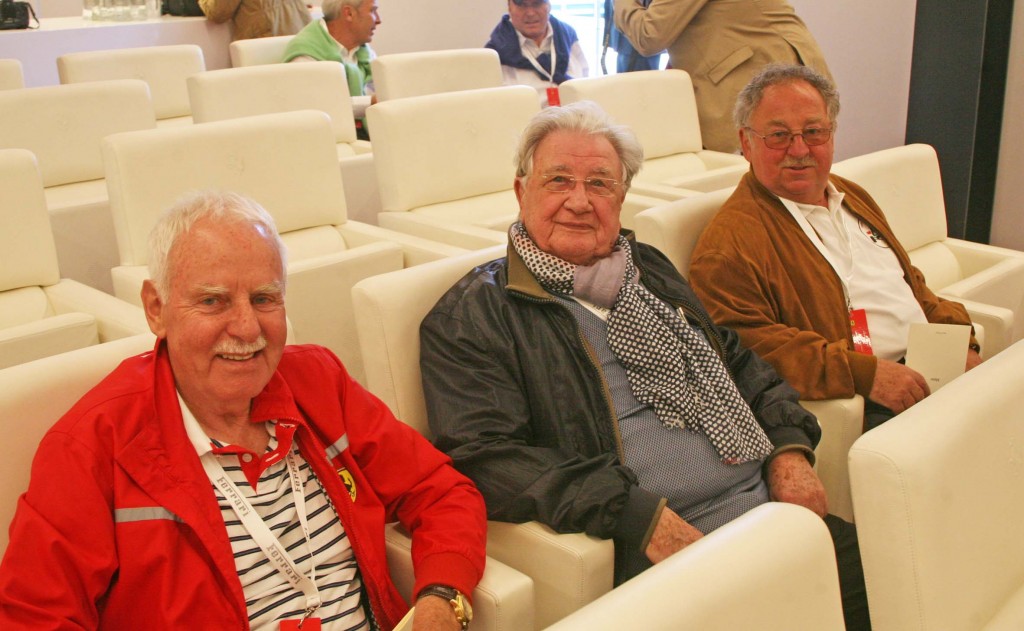
The first stop was the Sala Rossa in the Ferrari Development Centre where everyone was welcomed by Stefano Lai the senior vice president of communications followed by a visit to the Mechanical Workshop. Unlike many car factories the new facilities in Maranello feature avenues of trees in the grounds and even inside the Mechanical Workshop.Amongst the various stations, where parts are being machined and built, there are islands of trees and plants.
In the early days of Ferrari the original buildings were like extended garage workshops but with the incredible success of the company through the years and their expansion to the north of Maranello it is like a town of its own.
Clearly, in modern society, you are no longer able to wander in and out of the production line taking photographs, for as with almost all technological facilities today all photography is banned which was a pity.
The statistics from the manufacturing side of the factory are impressive. Both the Mechanical workshop and the Production lines run on a 24 hour three shift system to keep up with the production numbers at Ferrari which have now reached 7600 units a year of which 95% are exported. Even the assembly line system in run on two different floors with the V12- engined cars being put together upstairs and all the other models downstairs at ground level. We paused to watch a robot-controlled module slide across the floor holding the a chassis with engine and mechanicals arrive below a body that slowly descended and neatly sat on the chassis. Two mechanics then bolt the sections together and the car moves to the next section all the way to the final station where the car is filled up with fuel and wheeled away. By contrast, sixty years ago, Ferrari usually built three cars with the bare chassis mounted on metal stands and it was the men who rushed about grabbing wheels, steering boxes, seats etc. Changed days.
We were then led to another building where the familiar grizzled and smiling Ferrari racing boss Maurizio Arrivabene talked about how he continually reminds all the staff in the racing department to remember Enzo Ferrari “…..We have a photograph of Enzo Ferrari in the workshop and I tell them that we are representing this man. How we may be having a difficult season but that Enzo Ferrari would not give up after just four grands prix”!
In the racing department Ferrari have built a viewing platform and the members saw three of the stripped down tubs being prepared for the Spanish Grand Prix.
Ferrari Classiche is a relatively new department of Ferrari in the old original factory buildings and where the company will not only repair and rebuilt any Ferrari of any age but will check over everything and present the owner with a red book confirming that their car has been refurbished by the factory. Lying there and waiting to be worked on was a 1963 Ferrari GTO but, by a complete co-incidence, there was a 1952 Ferrari 212 Export Berlinetta sitting in a corner which our honorary member Claude Leguezec ( Former Competitions Manager for Matra in Formula 1) recognised as the car in which he competed in the 1952 Liege-Rome-Liege rally along with his friend Marius Heyman. Tragically on the road section from Rome to Bolzano Heyman went off the road, hit a tree and was killed. Claude, who was asleep in the passenger seat, was thrown through the windscreen and injured. Now, for the first time in sixty four years, he was seeing the car again.
During the afternoon of the first day there was a visit to the Ferrari test track at Fiorano. That morning Sebastian Vettel and Kimi Raikkonen had been testing but Ferrari’s latest young test driver Raffaele de Simone was there with Ferrari’s latest super car, the F12 Tour de France.
Raffaele, unlike many test drivers, has a degree in engineering and was made Ferrari’s senior test driver two years ago taking over from Dario Benuzzi. He formerly raced but stopped to concentrate on his new job. He created a little bit of history by lapping the Nurburgring in the modern Ferrari GTO in 6:58.1 , the fastest time ever recorded by a road car on the circuit. The car he had at the track was the most powerful version of the new F12 boasting 780 bhp and capable of reaching 124 mph from zero in 7.9 seconds.
Surprisingly, none of the Grand Prix Drivers Club members were able to drive the car but those who went out on the track with Raffaele, like Vern Schuppan and Derek Warwick were not only impressed by the truly stunning performance but the smooth way de Simone handled the car: mind you he has plenty of practice as he has to sign off every new Ferrari.
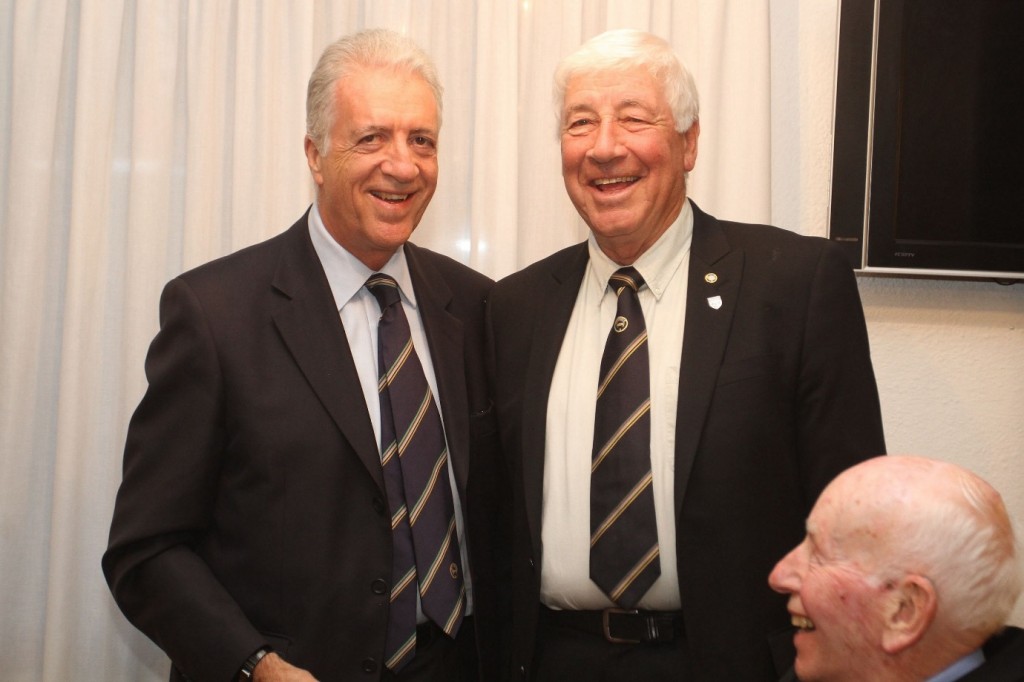
That evening dinner was held in the famous Cavallino restaurant opposite the gates of the original Ferrari factory. The special guest of the evening was Ferrari Vice-President Piero Ferrari and before dinner Howden Ganley officially made Piero an honorary member the Grand Prix Drivers Club. Piero immediately took off his tie and replaced it with the Club tie. A charming, self-effacing man, Piero Ferrari was seated next to one of Ferrari’s most famous drivers, John Surtees and close to Patrick Tambay, another former member of the Ferrari Grand Prix team.
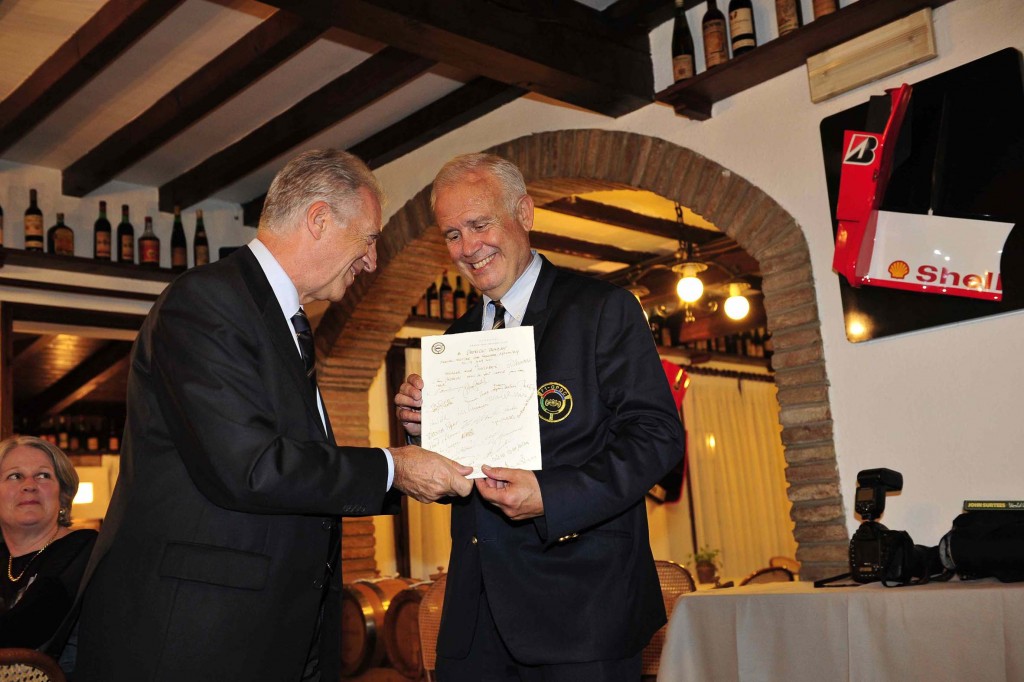
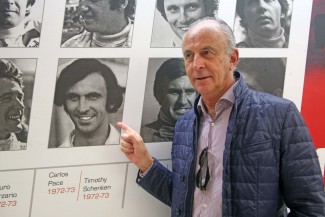
The following morning everyone climbed aboard the coach and set off to the centre of Maranello and the Ferrari Museum. As it was a Saturday morning it was crowded but all the drivers mingled with the crowds. As there is a wall of photographs of all the Ferrari drivers many of the Italian fans wanted photos of our members beside their photos such as below where Tim Schenken posed with his youthful photo.
There was a rush when John Surtees posed beside a life-sized cardboard cut-out of him when he won for Ferrari.
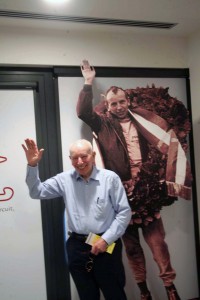
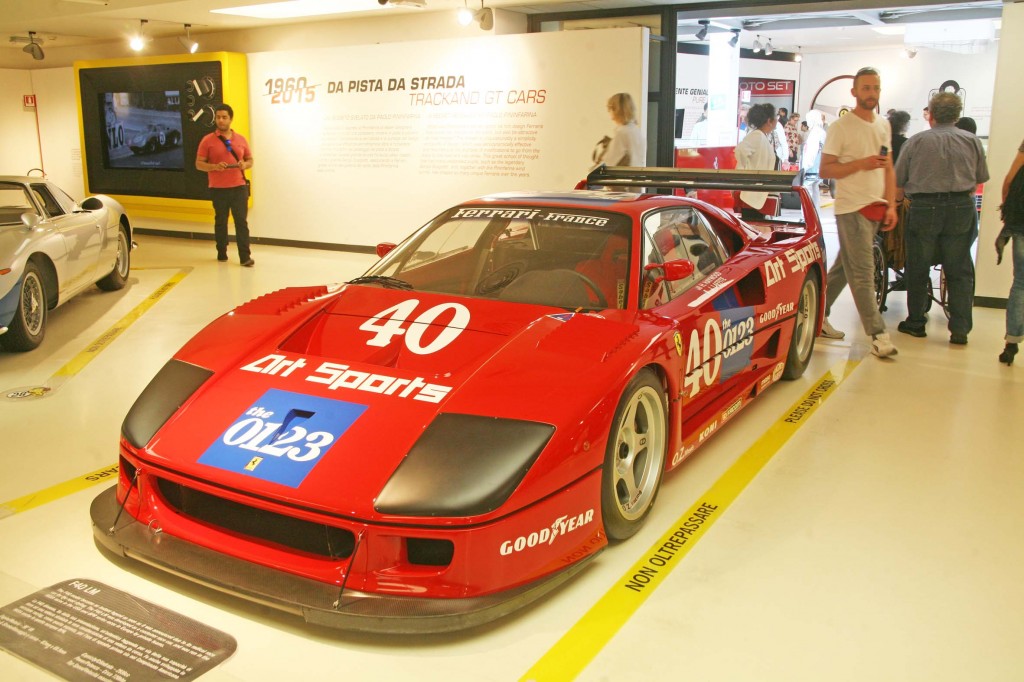
That afternoon there was a visit to the Panini Museum in the countryside near Modena. The host was Matteo Panini whose father, Umberto, saved the collection of Maserati engines and cars from the factory from being sold by auction. Mr Panini founded and ran a company that became the largest producer of promotional cards and stickers starting off with cigarette cards of sports stars but which mushroomed into a huge business producing promotional cards. When he originally sold out to Marvel Comics in the USA it allowed him to create his dream, to produce Parmesan cheese. Today his El Hombre farm produces probably the finest Parmesan in the region. They are passionate about biological production and their best aged Parmesan is sold all over the world.
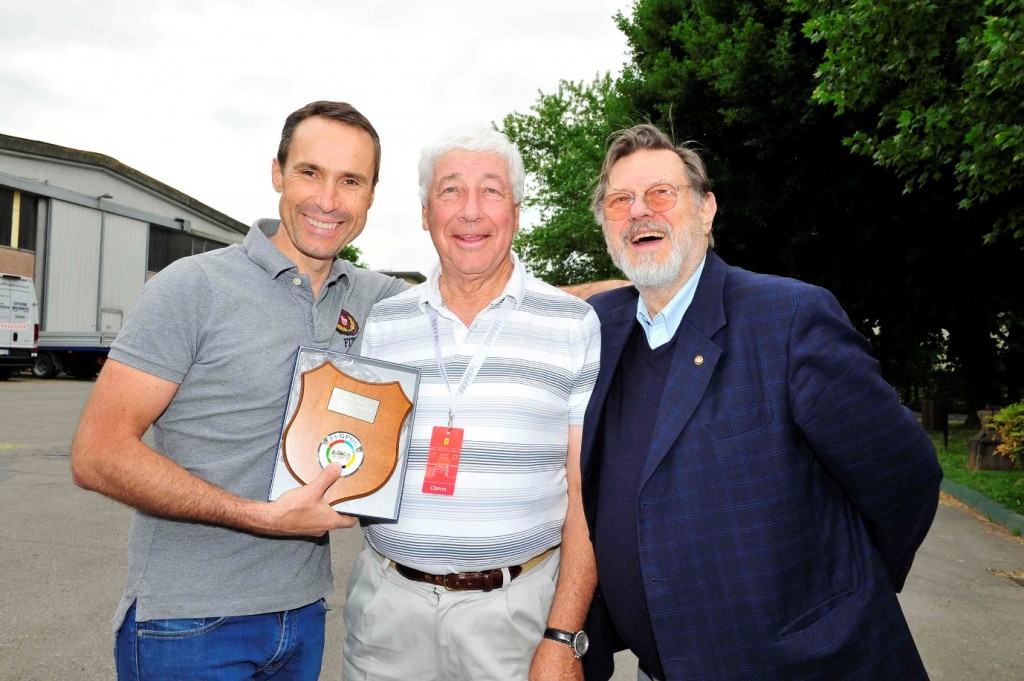
Matteo and his father, however, are true car enthusiasts and their collection of cars includes not only the major show cars such as a Maserati 250F and Maserati Tipo 63 sports car but a full Maserati birdcage chassis and the streamlined Lambretta scooter designed by Maserati engineer Giulio Alfieri. However, upstairs Tim Schenken found a very early Lotus 18 Formula Junior car, chassis 701, a few chassis numbers earlier than the one he raced early in his career in Australia.
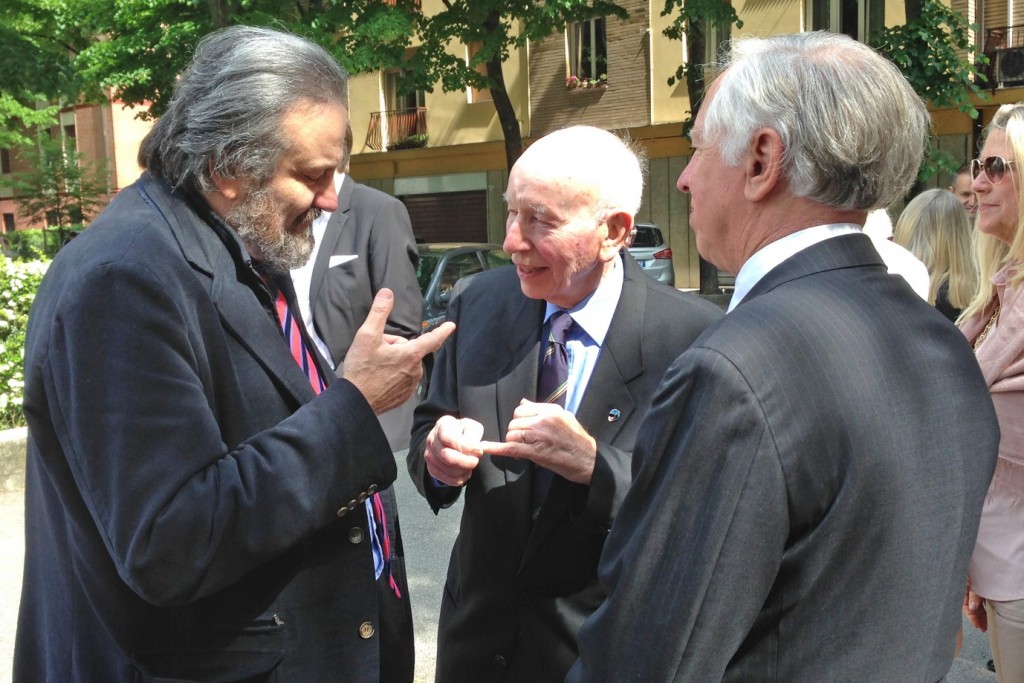
The following day, Sunday, there was a moving ceremony in the church of Santa Caterina in Modena, a memorial service to Maria Teresa De Filippis, the former President of the Grand Prix Drivers Club. The service was conducted by Don Sergio Mantovani who, three years ago, celebrated his sixtieth anniversary of joining this Modena dioscece. He was priest initially for Maserati and attended grand prix races regularly. In his later years the great Luigi Villoresi stayed at the nursing home at Santa Caterina run by Don Sergio. It was a mixture of old and young as nearly all the members of the Maserati retired mechanics club were also present in the church.
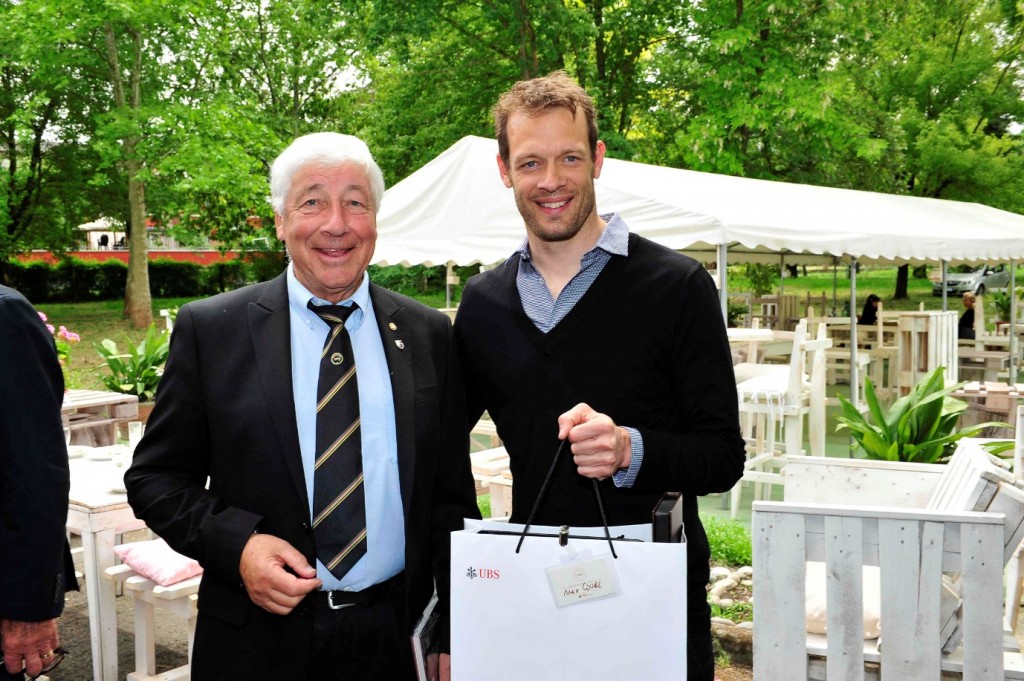
Monday saw a change of pace when we arrived at the new Modena Autodrome, used for driver training, and club racing. Here we were met by Harald Wester, CEO of Maserati and faced with a group of the quickest Maserati road cars as well as one of the LC12 GT1’s with former Championship winner Andrea Bartolini who was offering rides. At lunch that day Harald Wester also paid tribute to Maria-Teresa: “…..she played an important part in Maserati life and we will never forget a great lady”. In his reply, Club President Howden Ganley admitted that it was watching Prince Bira race his 250F Maserati in New Zealand that made it his favourite car.
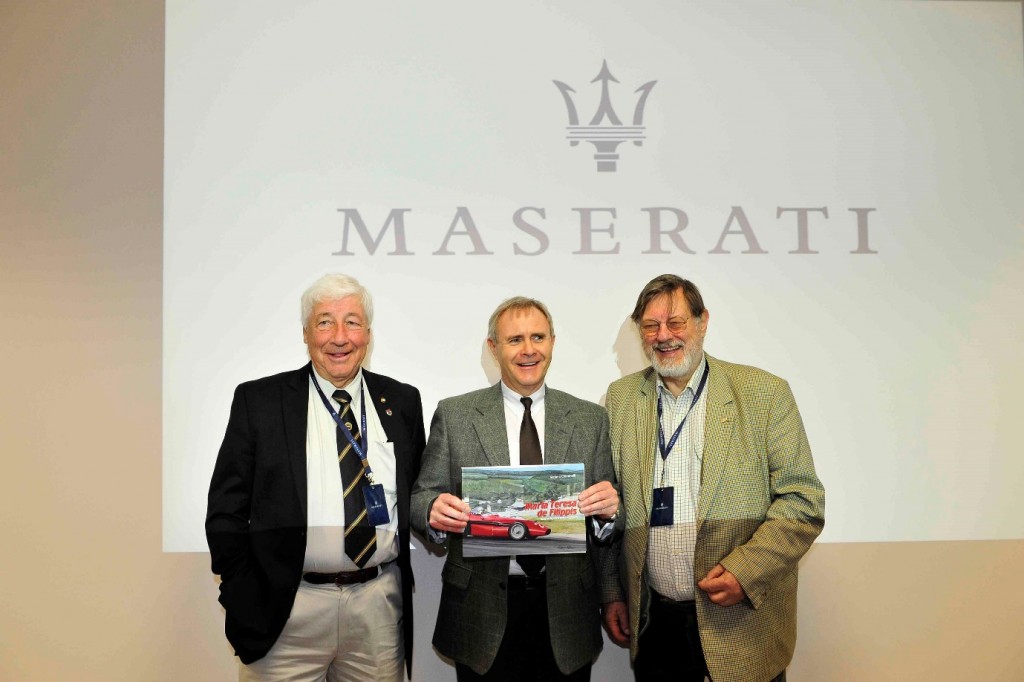
Amongst the cars available was the new MC Stradale Special Edition road car that offers 460 bhp from its V8 engine, Maserati’s latest SUV the Levante S with 410 b.h.p. and, to change the mixture one of the new 500 bhp Alfa Romeo Quadrofolio powered by a V6 engine mated to an 8-speed automatic transmission. All three underlined the fact that Maserati and Alfa Romeo are getting close to Ferrari performance in their road car range.
The five day visit to Maranello and Modena was a very special occasion for the Grand Prix Drivers Club but it was not just confined to cars because food from the Modena area is world class and three of the restaurants in which we ate are famous not only for food but links to Ferrari. The Cavallino has already been mentioned.
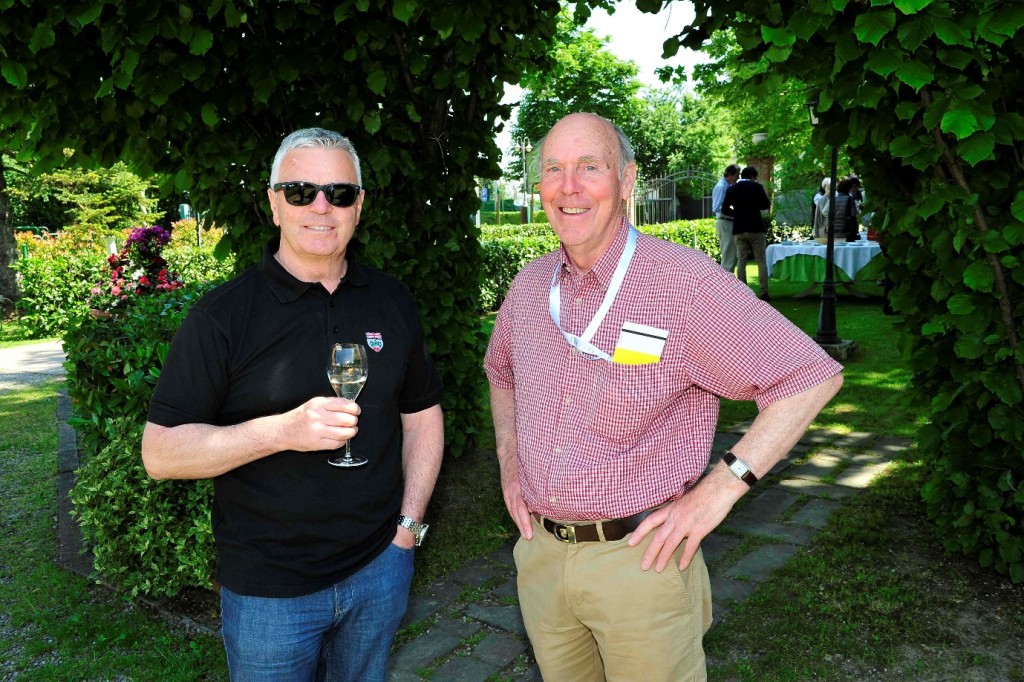
Then there was the Montana which is also close to the factory and a favourite with drivers and Europa 92 which was the favourite restaurant of Modena’s musical son Luciano Pavarotti. Indeed Pavarotti’s house – which now houses the Pavarotti museum – is right next door. The owner, Cesare Clo, like Pavarotti is a great enthusiast for Ferrari and it is a place worth visiting. However, our last dinner was held at Da Pasticcino in the village of Castelnuovo Rangone.
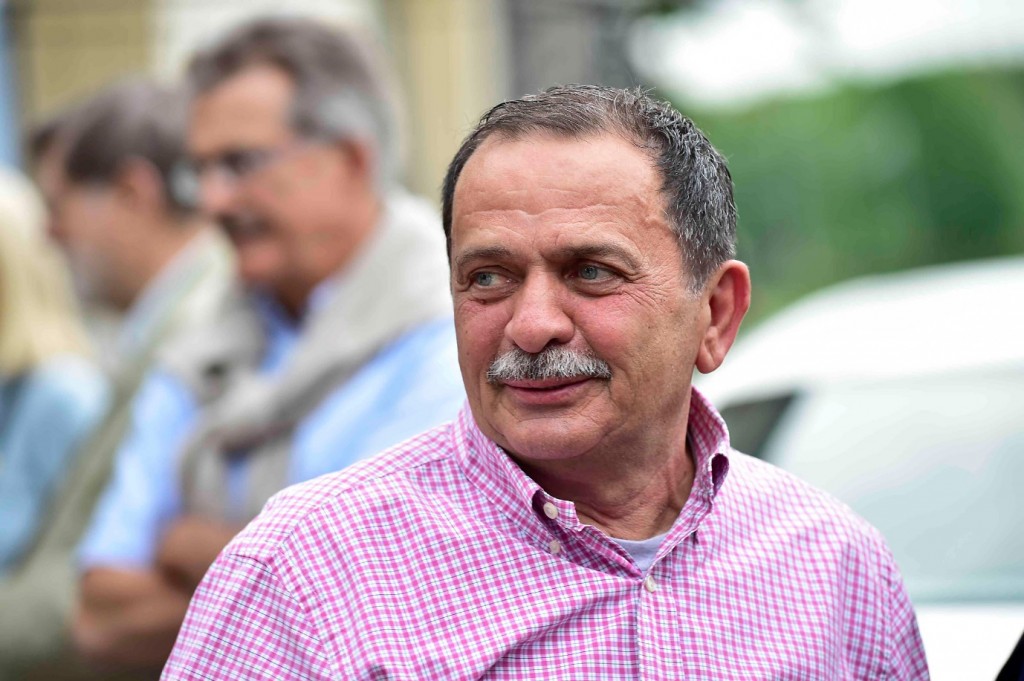
We mention it specifically as it is owned and run by Luigi Montanini who was one of the first chefs to cook for Ferrari at the circuits. As Enzo Ferrari once said, “…the mechanics work better if they eat well.” He was so successful at Ferrari that ten years later he was poached by Flavio Briatore to do the same for Benetton but today he has opened his own restaurant which is a favourite with racing drivers whenever they visit Modena or Maranello. An appropriate way to end a Club meeting to remember.
